If you’re in the social media business, you know that one of the most common questions clients ask is “What’s the ROI of social media?” It’s a valid question and one that can be difficult to answer. Here you will learn how to measure social media ROI.
After all, social media is often seen as a bit of a black box – it’s hard to track how social activity leads to sales or other conversions.
But social media ROI is important for your clients to understand as you work on their social media strategy.
Table of Contents
What Is Social Media ROI?
Social media ROI is the return on the investment of your social media marketing. That can include social media posts, boosts, and pure ads.
The time to create posts is included in this calculation of social media return on investment. Of course, you may be paying someone to do that for you.
To calculate the ROI of your social media it’s simple math:
Investment – Cost = Profit For example, if you spent $1,000 a month on social media posts and ads that were your investment.
Profit / Investment = Social Media ROI. 2,000/1000 = 1,000 ROI or 100% ROI.
However, if these social media posts and ads brought in $2,000 of new business then you would subtract the investment cost of $1,000 and you would be making $1,000 in profit.
Of course, note that it can take 12-36 months for social media to work well in most cases. (Unless you spend a lot of money on social media ads.)
Social Media Marketing ROI Calculator
Note: You may need to view the web version on mobile for the calculator to work.
Time Factor
You need to gain traction with your social media marketing for it to work and that takes time and patience.
Something many business owners may not have a lot of these days. Social media helps brand awareness grow but that does not equal ROI to many business owners.
In the event you are feeling the pressure of managing social media, there are reports for measuring social media ROI you can generate to show the progress over time as you will see below.
Here’s Why Social Media ROI Is Important To Understand
- It shows them that you’re serious about your work.
- Then, the ROI demonstrates that social media can be a valuable investment, not just a time-suck.
- Therefore, it helps them set realistic expectations for what social media can achieve.
- It can help them plan better for future social media campaigns by analyzing what is working and what is NOT working.
How Can You Measure The Return of Investment?
Here are a few tips for you:
- Look at web traffic data. If you see an increase in web traffic after starting a social media campaign, that’s a good sign that social media is driving results. You can also see which social network is driving the traffic by looking at referral traffic.
- Use Google Analytics to track actionable conversions. You can set up goals in Google Analytics. This tracks how many people who visit your site take the desired action. Whether it’s signing up for a newsletter or making a purchase.
- Pay attention to engagement metrics. Social media platforms like Facebook and XTwitter provide insights into how people are interacting with your content. If you see more likes, shares, and comments, that’s a good sign. It means that people are engaged with what you’re putting out there.
- Look at the demographics. What demographic is responding the most to the social media marketing strategy? Maybe some changes are needed to match the demographic.
Why Organic Social Traffic Can Be Hard to Track
With organic social media, it’s harder to track the ROI. Sometimes, it takes weeks or months for a post to go viral.
It may be harder to point to it when a purchase is made. (Unless you have a store right on Facebook or Instagram.) It’s even harder for service industry types of accounts. That’s where social media KPIs come into play.
It may be harder to point to it when a purchase is made. (Unless you have a store right on Facebook or Instagram.) It’s even harder for service industry types of accounts. That’s where social media KPIs come into play.
A good marketer knows you have to have the metrics in place to be measured.
KPI’s – Key Performance Indicators
Before you manage social media for anyone, you should figure out which KPIs are important and how to measure ROI on social media:
- Engagement – The number of people who liked, commented, or shared the post on the social media network.
- Reach – How many people saw the post in their social media feed?
- Leads – Inquiries from direct messages on the social network, emails, or a contact page set up on your website. If done correctly, it could be a goal set up in Google analytics.
- Sales – If you can track the sale back to the social media post or ad.
- Email Subscribers – Visitors sign up for your newsletter.
- Downloads – Ebooks or white papers downloaded from your website.
These actions can be tracked with a pixel set up on your website’s backend. Then, of course between your social media analytics and Google Analytics, you should be able to track better the results of your social media ROI.
However, your post may have received a lot of engagement but if no one reached out to you directly or purchase anything, does it really count?
As a social media manager, you need to figure out what’s working and what is not working well on social networks.
Reporting Made Quick and Easy
Agorapulse offers social media reporting that is easy to show clients how their social media posts and marketing is working for them. Years ago I tried Hootsuite and found Agorapulse much easier to use and their reporting extremely simple.
Not only can you share the reporting with clients but you can “white glove” the report with your logo and their company logo as well.
Furthermore, you can spot which days work best and what type of media works on each network for your accounts. However, notice that you can change up the days and times after reviewing each month’s reporting. Users tend to have different habits during different seasons.
This feature from Agorapulse helps you plan future social media posts to get more traction. It also is easier and quicker to track social media ROI with Agorapulse reporting.
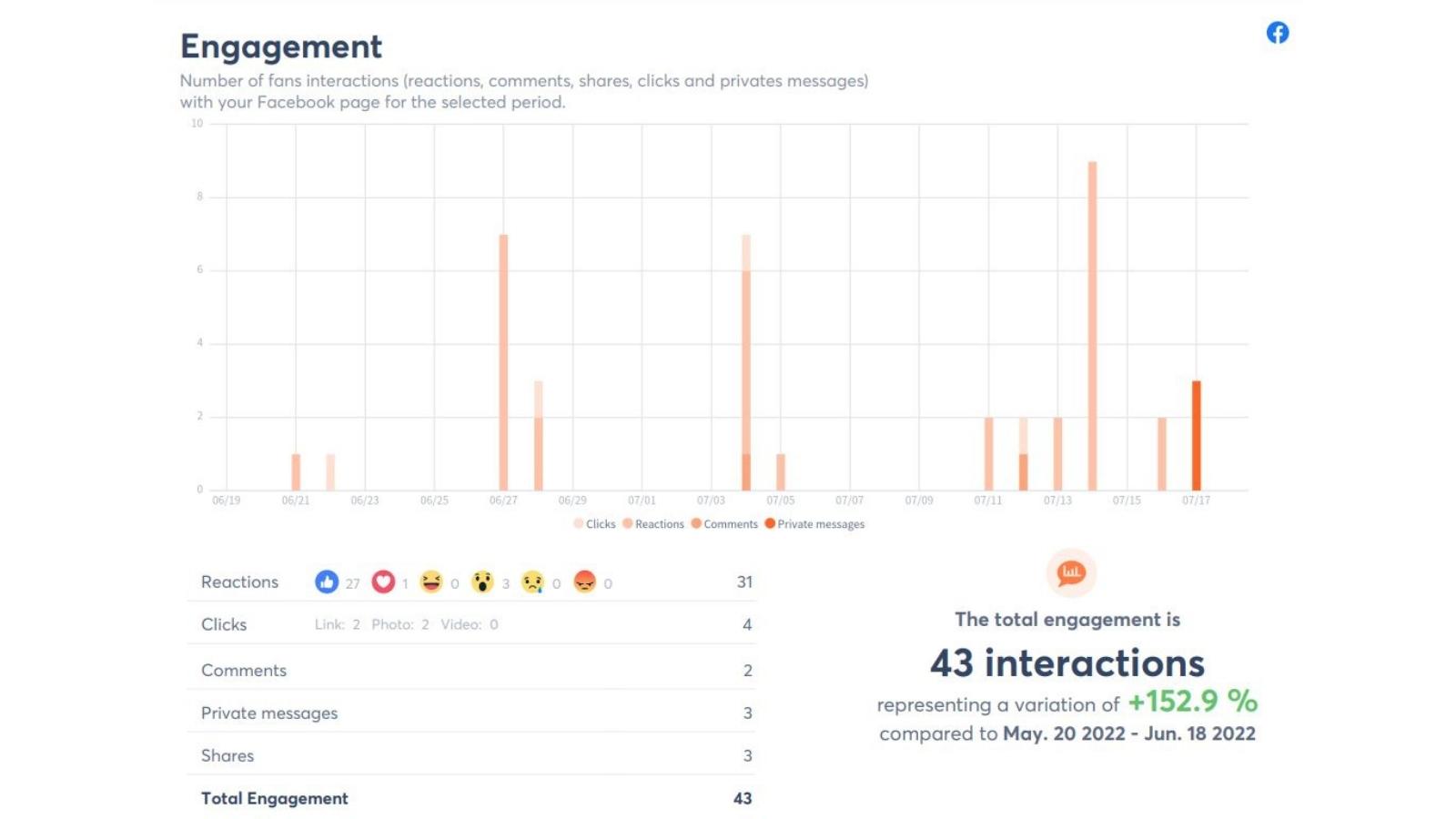
Not only that but you can view competitor reports with up to 3 competitors per client in Agorapulse. Look at Kim Garst go!
Notice that she does not post often either on Facebook. Sometimes less is best when it comes to social media strategies.
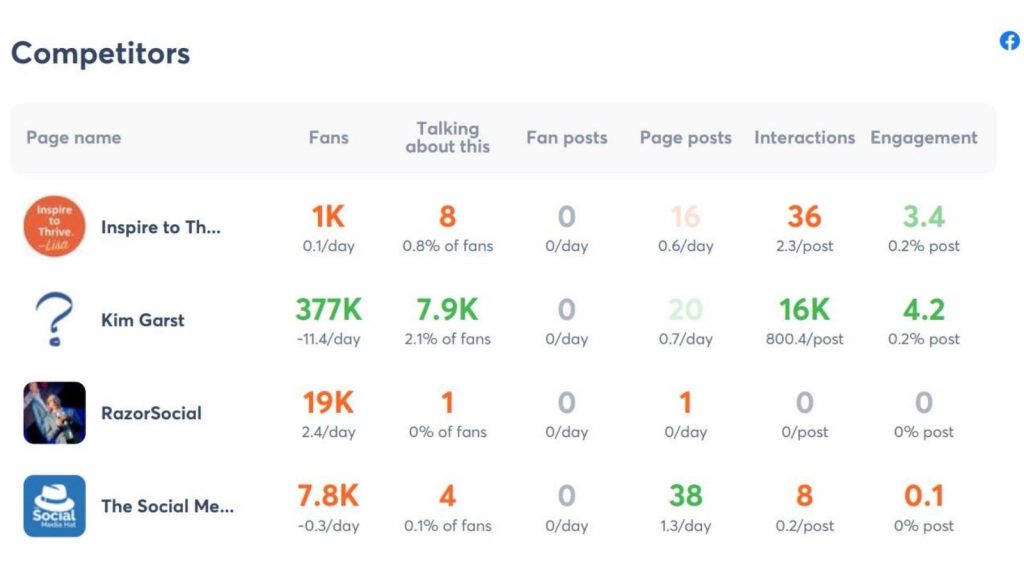
See the easy-to-produce social media reports here.
Easier Facebook Ad Reports to Show ROI
Agorapulse also offers an easy-to-understand Facebook ads report feature. You know how complicated the Facebook business suite can be and how often they change it, right?
Well, this report by Agorapulse makes it much easier to understand you can share it with your clients too. It will help them see the social media ROI of their Facebook ad campaigns and boosts.
Now Social Media ROI with Agorapulse Reports
Yes, now Agorapulse offers these new integrated reports for social media ROI.
These automatically pull data from Google Analytics, so you can easily see the performance of your social media efforts. You can easily create, organize, and shorten UTM links for social media posts, comments, or messages. All in one convenient place.
Furthermore, you can showcase the ROI for your social media marketing strategies as well. This transparent reporting makes proving the real impact of your social media efforts on sales, leads, and visitor behavior simple!
Get the whole picture with Agorapulse ROI features. Not only that but you can integrate your Google Analytics with it and see how your GA goals are doing for ROI.
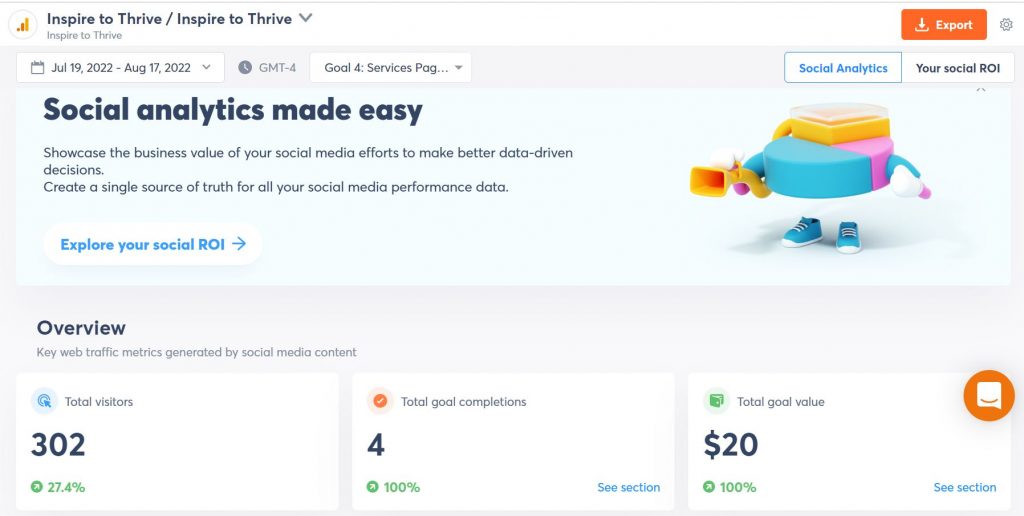
How To Dig Deeper for Alternative Social Media ROI with UTM Codes
If you want to dive deeper into your results set up goals in Google analytics. You could also use UTM parameters to show where your traffic is coming from.
For example, I’m on Gab, an alternative social media network. The traffic does not show in Google unless I put the UTM parameters in. It is the same for the MeWe Social Network. MeWe is the Facebook alternative.
It’s easy with this tool online to set them up. It takes less than one minute and is a great way how to measure social media ROI for all social networks.
Once in place, you can track your social share posts from there in your GA account. For a while, I thought I was getting no traffic from these sites until I started using the UTM codes. Now I can see the traffic coming in by tracking them.
It’s a great way to show alternative social media ROI to your clients. However, visits may not turn into sales so be sure they have the correct landing pages set up with each social media campaign in place.
You can bring the horse to water but you can’t make the horse drink the water! Sometimes you have to nudge clients about their website and where the social media posts and ads are taking viewers to.
Conclusion: Measuring Your Social Media ROI
Measuring your social media ROI is about understanding if your efforts are paying off. Start by tracking specific metrics that align with your goals, like engagement, leads, or sales. Use tools like Google Analytics and platform analytics to monitor performance and conversions.
Compare the results to your investment in time, money, and resources. If the numbers don’t match up, adjust your strategy.
Consistently review your data so you can make smarter decisions moving forward. It’s not just about likes—it’s about results that grow your business.
Don’t forget you can use the quick calculator above for your social media ROI.
- Instagram Reels On TV: Should Your Content Hit The Big Screen? - December 18, 2025
- Valuing a Blog Business: 9 Mistakes That Lower Your Price - December 17, 2025
- How to Hide Followers on Instagram from Others: Simple in 2026 - December 15, 2025

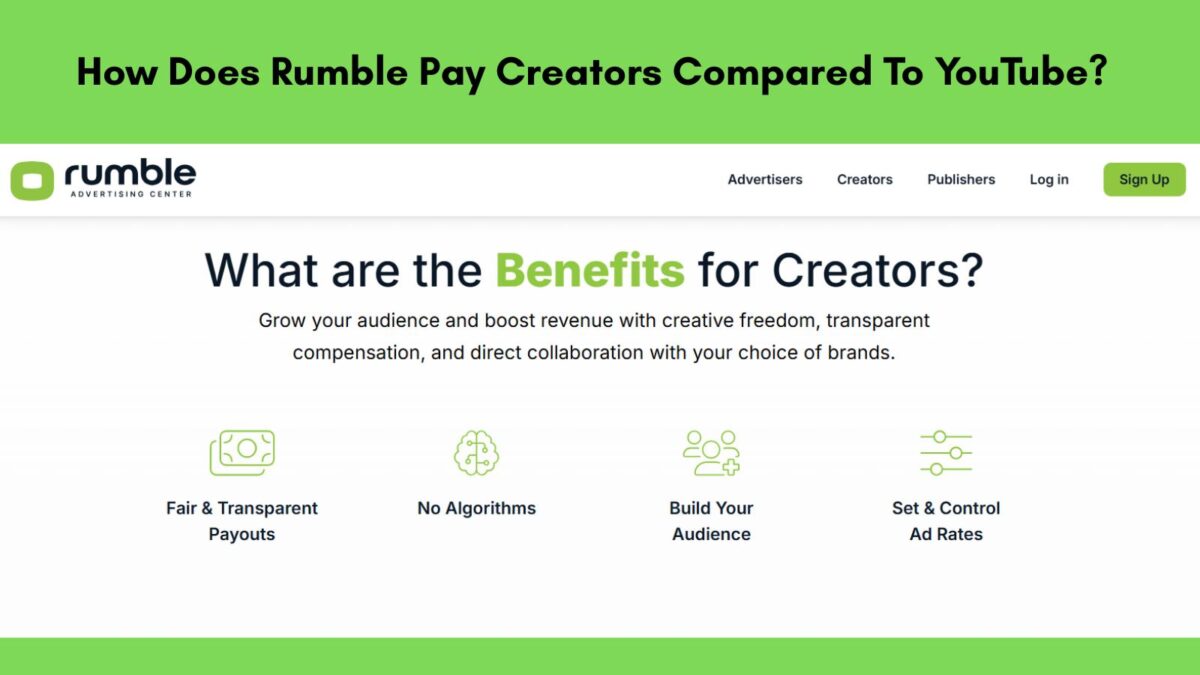
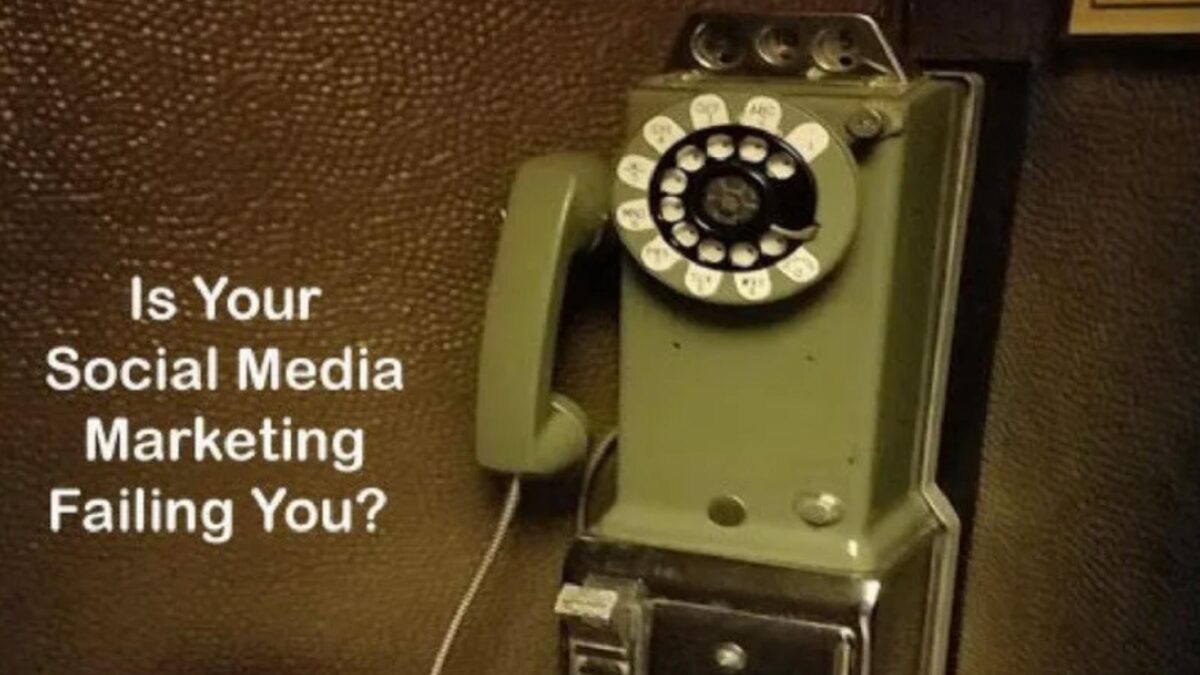

Hi Ryan, exactly, people want ROI – they don’t care about likes or visits, just does it bring in any money? Thanks for your input Ryan on this and have a great new week and month.
Hi Lisa,
I haven’t done client work in a while but this post definitely makes sense because you need some type of roi to figure out if your social campaign is getting the job done. This is a helpful guide because social media seems confusing. People can spend hours on Facebook or Twitter and appear to be working effectively yet they’re wasting their time in most cases. Quantifying your return on investment can steer you in the right direction.
Ryan